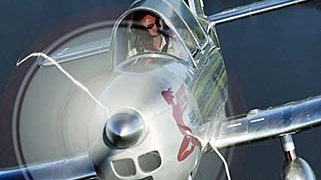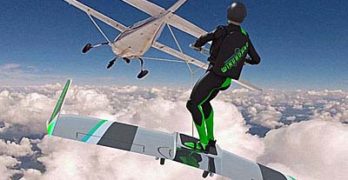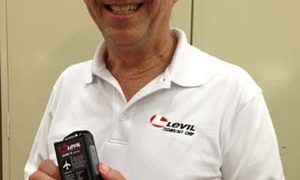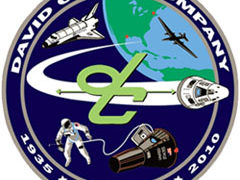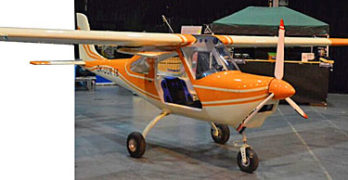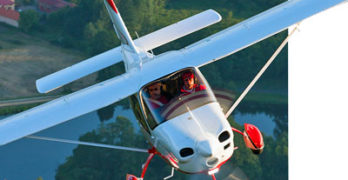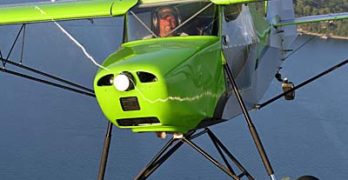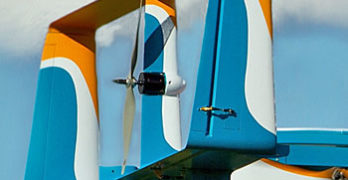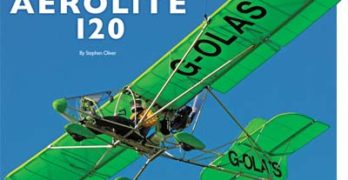Zenith and Zenair are closely-linked enterprises with different leaders in different countries. In recent years, the three Heintz brothers took different responsibilities for the business founded by dad, Chris Heintz. An aeronautical engineer, Chris founded Zenair Ltd., in Canada in 1974 and parleyed his design pedigree into a flock of airplanes that have sold by the thousand all over the world. Today, Matt, Sebastien, and Michael run the multifaceted firm.
Through 2015, the combined effort of Zenith and Zenair sought to produce light plane models called 750 STOL, 750 Cruzer, and 650B Zodiac plus four seat kits called CH 801/8000, a sport-utility plane, and the four-seat CH 640 plus a type-certified four seater called CH 2000.
That fleet recently got a bit larger when Zenith / Zenair bought the assets from the Canadian developer of Sam LS.
“Sam Aircraft assets have been acquired by the … owners and operators of Zenith Aircraft Company (U.S.) and Zenair Ltd.
Search Results for : Flight Design
Not finding exactly what you expected? Try our advanced search option.
Select a manufacturer to go straight to all our content about that manufacturer.
Select an aircraft model to go straight to all our content about that model.
Redefining Open Cockpit Flying … Sky Skiing?
For my weekend posts, I often like to check out something out of the ordinary. From the photos you see nearby, you can see I found a qualifying topic. However crazy as this activity — involving the name “WingBoard” — may look, it appears grounded in reality.
If you think of wingsuit sky diving as just “edgy,” then Aaron “Wyp” Wypyszynski‘s Wingboard could seem relatively tame.
Watching all his videos, I’d say Wingboarding was more akin to sky skiing, as in water skiing behind a boat, except a wider use of three dimensions than you get on water.
Start with the following video which gives a decent explanation of the project from the developer’s point of view.
Aaron “Wyp” Wypyszynski began flying full-scale aircraft at age 13, soloed at 16, and remains an active pilot (photo below). He was inspired by a cartoon, saying “Kit Cloudkicker [was seen by] millennials who grew up watching “TaleSpin,” and dreaming of carving through the sky like Kit on his airfoil.” Funny how something we experience as a very young person can stick with us our whole lives, eh?
Levil Is a Story of Determination and Good Timing
If you ever read newspapers or watch network news, you can hardly avoid hearing about the meltdown in Venezuela following the early 2013 death of Hugo Chavez. That Cuba-emulating country was taken over by Nicolás Maduro and things deteriorated quickly. I start the story of Levil this way as I recently visited their Oviedo, Florida facility and I had to wait until proprietor Ruben Leon returned from travel. When I arrived at Levil headquarters I found he had returned to his former home, Venezuela, to vote in the elections. The elections won by the opposition served notice on the Maduro administration that his countrymen are fed up and want change.
How this all relates to the business of Light-Sport Aircraft products is a tale of one man’s resolve and determination. I found it fascinating and hope you will, too.
After completing his education, Ruben sought work in a country where finding a good job can be a challenge.
DC Was Green Long Before It Was Trendy
Question: What do space suits and headsets have in common? I bet that few of you can answer that question but the answer is “David Clark.” Yep, this 80-year-old company, which began business in 1935, started not with the ubiquitous green ear cup headsets but with flight suits worn by pilots of some very cutting-edge aircraft and spacecraft.
David Clark Company made full-pressure suits developed for test pilots who flew the X-15 to record speeds and altitudes of Mach 6.70 and 354,200 feet. The East coast company also made Gemini space program suits including the G-4C space suit for Ed White’s first U.S. space walk
Full-pressure suits worn by pilots of various high-altitude aircraft such as the F-4, F-15, U-2, and SR-71 Blackbird and space shuttle crew escape suits were all produced David Clark.
After all that, headsets may seem a bit mundane, although not for those who care about good cockpit communications and protecting their hearing.
Pssst! Want a Deal? How About Merlin PSA?
Are you intrigued by an affordable yet well-performing single-seat Personal Sport Aircraft? In a time when so many claim light aircraft have simply become too expensive, one aircraft is coming to challenge that belief. Some rather grudgingly acknowledge that, yes, you can buy a low-cost aircraft but that it won’t satisfy your desires … that it will have an open cockpit, or is too slow, or uses an engine you don’t know, or that it lacks the right instruments, or it will be a weight shift aircraft or a powered parachute … or something that disqualifies it for them.
Well, even our friends at Flying magazine — thanks to popular writer Pia Bergqvist, who also covered such aircraft as Quicksilver‘s wide-open Sport 2 SE — gave recent prominent coverage to what importer/developer Chip Erwin is doing with his Merlin PSA.
Does the name Chip Erwin ring a bell?
Tecnam — Firing On Multiple Cylinders
After more than a decade of LSA, one airframe manufacturer stands head and shoulders above all other in what I call the “light aircraft space.” That term gets stretched far and wide with this update on Costruzioni Aeronautiche Tecnam … simply “Tecnam” to most folks.
If Tecnam was a person, I’d call him restless and tireless. Does he sleep? I think not. Are any flying machines not possible for this design dynamo? I see no limits to his ambitions. So prolific is this Italian aviation powerhouse that I will blend several news items into one story.
Tecnam is a large team, an entire factory full of hard-working people, and representatives of all sorts scattered across several countries. At the core of this engine of production (33 models and variations) is Luigi Pascale, the 92-year-old patriarch of Team Tecnam with management by nephew, Paolo Pascale. Paolo is the visible face of Tecnam at airshows, standing literally head and shoulders over most of his competitors.
American Exports: LSA Like Just’s SuperSTOL
If you’ve read a newspaper or watched TV in the last couple decades, you might think America only imports stuff, mostly from China. Of course, that is ridiculously simplistic and just plain wrong but constant repetition of incorrect news may eventually convince people that it is the truth.
At one time, it seemed all Light-Sport Aircraft also came from overseas. Indeed, in the earliest days of Light-Sport Aircraft, rules in Europe allowed fully-built aircraft that were very similar so those producers could more quickly enter the new sector. In 2005 and 2006, more than two-thirds of all LSA were imported. While imports remain a strong and important supply of worthy aircraft, an increasing number are now produced in the USA.
American companies have caught up and are now arguably pulling ahead. This is true in the innovation of design, in production of ready-to-fly SLSA and in the kit market where American companies were always the strongest and have remained so.
Glowfly Update; Clever Name—Clever Project
What’s in a name? I like Glowfly, as a sort of double entendre. It could suggest “Go fly,” or it might refer to glow as in the spark employed to start a turbine engine. Yup, in case you didn’t see our earlier article by Dave Unwin, the newly renamed Glowfly is a jet-powered sailplane that uses electric-powered main wheel propulsion to assist. How’s that for — as my favorite British comedy troupe, Monty Python, used to say — “something completely different?”
Formerly called GloW (which nearly everyone was sure to misspell; certainly your smarty-pants smartphone would never get the capitalization right), Glowfly is moving along smartly. Here’s an update the folks at ProAirport sent along.
“The first public reveal — Project Glow becomes Glowfly,” glowed the ProAirport team.
In the last weekend of November at the Flyer Live show, ProAirport said, “We were overwhelmed by the number of visitors to the ProAirsport stand. It was truly fantastic to meet and talk to all these extremely interested people who had made a beeline for us after hearing and reading all about Project Glow [the project’s earlier name].” They reported that many interested pilots specifically came to see Glowfly live, as the show name suggests.
FAA’s Billion-Dollar Problem (Hint: Drones)
I realize that for some readers I may be swimming upstream when I write about drones (or UAVs or RPVs, or whatever). First, many of you simply don’t care; your passion is for manned flight and I completely understand. Second, some of you see real danger to your manned flying due to a growing drone population. Those who guess the future think more than a million units will be sold this holiday season. Third, we have the matter of privacy. Probably like you, I don’t like the idea of some government agency or even a snoopy neighbor being able to peer into my yard against my preference.
This article presents a somewhat different, somewhat nuanced view of drone development and the reasons are financial, which may not be how you’ve seen this issue. Consider that FAA is — compared to most aviation businesses — an absolutely enormous organization. It has an annual budget of more than $15 billion and around 50,000 employees.
Aerolite 120 Launches in Britain and Ireland
Aerolite 103 from U-Fly-It has been on a tear for the last couple years, producing at capacity and stretching to produce even more for 2016. Some of those very attractively priced aircraft — way under $20,000 ready-to-fly! … take that, sluggish economy! — are headed off on the longest trip of their lives. The DeLand, Florida company has been shipping units to Europe where their German-based European distributor operates.
So much for too-costly airplanes. Aerolite 103 (and a few other well-priced examples from light aircraft producers) proves an airplane doesn’t have to be costly to deliver a good time. The German Aerolite 120 is somewhat costlier to account for shipping, German certification expense, etc.
“British pilots have embraced Aerolite 120,” said German distributor Vierwerk Aviation. “Aerolite’s proper design, very good quality, and meticulous workmanship in every detail have been praised and recognized by everyone.” Aerolite 120 is the European-approved version of America’s Aerolite 103.
- « Previous Page
- 1
- …
- 79
- 80
- 81
- 82
- 83
- …
- 147
- Next Page »


